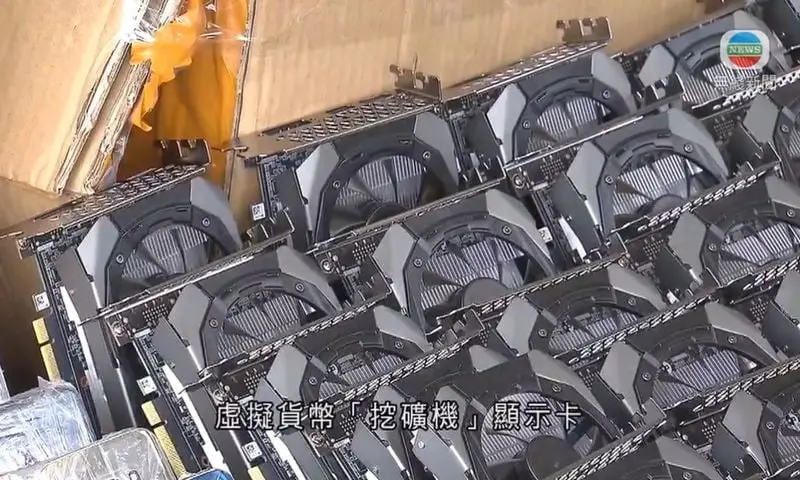While thousands of gamers continue to wait for RTX 30s to be restocked at the original launch price, Hong Kong customs has seized a batch of NVIDIA CMP HX GPUs with over 300 units of the CMP 30HX, which were reportedly being smuggled into the country so they could be used in mining farms there.
While the reason for the action is not clearly stated anywhere, it appears to be the result of the Hong Kong government’s recent efforts to ban unauthorized cryptocurrency trading and use in retail.
In February, NVIDIA launched these dedicated CMP HX mining cards to meet the needs of Ethereum miners, among others, so they can leave gaming graphics cards to gamers. From an inspection of the driver, it was discovered that the CMP HX series is based on the next-generation Turing architecture with modifications that prevent them from running graphics workloads. The variant in question here is the CMP 30HX, which is a repurposed GTX 1660 SUPER and offers an ethereum hash rate of up to 26MH/s.

These cryptocurrency solutions are fully specialized, according to NVIDIA, and have been optimized to offer good cooling, facilitating airflow, offer performance that facilitates ROI, and will be available to all assemblers.
Along with the launch of the NVIDIA CMP HX series, the company had also (not too successfully) limited the mining performance of the RTX 3060s to dissuade miners from buying it as well. However, last month, the company inadvertently released an internal developer driver that removed this limiter.
Luckily, though, this wasn’t the only interesting factor for miners. The NVIDIA CMP HXs specifically dedicated to mining also excel in efficiency and power consumption, with 0.20MH/s/W on the CMP 30HX barely reaching 0.27MH/s/W on the high-end CMP 90HX. Values notably different from those of the RTX 30, whose series ranges between 0.42 and 0.53 MH/s/W.
Unfortunately, while the appearance of a batch of this size is somewhat of a relief for average users, demonstrating NVIDIA’s efforts to try to improve the current oversubscribed demand for its consumer GPUs, this does not detract from the fact that the “bottleneck” situation that severely affects the semiconductor industry is still present, preventing the big players in the industry from expanding their production capacity of 200 mm wafers.
As we reported a few weeks ago, the shortage of graphics cards could last until the second half of 2022, if not even until the first quarter of 2023.





